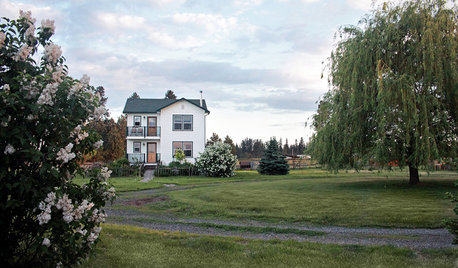Anyone make there own ph down 2?
bbrush
13 years ago
Related Stories

DIY PROJECTSGet Organized: Make Your Own Stylish Corkboard
New project for a new year: Craft an inexpensive custom pin board to keep papers, photos and more neatly at hand
Full Story
BUDGET DECORATINGThe Cure for Houzz Envy: Entryway Touches Anyone Can Do
Make a smashing first impression with just one or two affordable design moves
Full Story
LAUNDRY ROOMSThe Cure for Houzz Envy: Laundry Room Touches Anyone Can Do
Make fluffing and folding more enjoyable by borrowing these ideas from beautifully designed laundry rooms
Full Story
DECORATING GUIDESThe Cure for Houzz Envy: Guest Room Touches Anyone Can Do
Make overnight guests feel comfy and cozy with small, inexpensive niceties
Full Story
DIY PROJECTSMake Your Own Barn-Style Door — in Any Size You Need
Low ceilings or odd-size doorways are no problem when you fashion a barn door from exterior siding and a closet track
Full Story
WALL TREATMENTSCan't Find the Right Wallpaper? Make Your Own
For one-of-a-kind walls, just use your imagination. Custom wallpaper is easier and less expensive than you might expect
Full Story
HOUZZ TOURSMy Houzz: Northwest Couple Make a Rural Homestead Their Own
Country life agrees with these first-time homeowners, who have decorated their farmhouse in a rustic, low-key style
Full Story
MUDROOMSThe Cure for Houzz Envy: Mudroom Touches Anyone Can Do
Make a utilitarian mudroom snazzier and better organized with these cheap and easy ideas
Full Story
BEDROOMSThe Cure for Houzz Envy: Master Bedroom Touches Anyone Can Do
Make your bedroom a serene dream with easy moves that won’t give your bank account nightmares
Full Story
HOME OFFICESThe Cure for Houzz Envy: Home Office Touches Anyone Can Do
Borrow these modest design moves to make your workspace more inviting, organized and personal
Full StorySponsored
Most Skilled Home Improvement Specialists in Franklin County
More Discussions







danielfp
homehydro
Related Professionals
Simpsonville Landscape Architects & Landscape Designers · Salem Landscape Architects & Landscape Designers · Burlington Landscape Contractors · Waterbury Landscape Contractors · Americus Landscape Contractors · Bristol Landscape Contractors · El Sobrante Landscape Contractors · Fairhope Landscape Contractors · Gresham Landscape Contractors · Hawthorne Landscape Contractors · Northbridge Landscape Contractors · Parkland Landscape Contractors · Salmon Creek Landscape Contractors · Thornton Landscape Contractors · Raytown Landscape Contractorsbarberberryfarm
danielfp
homehydro
danielfp
grizzman
homehydro
barberberryfarm
grizzman
bbrushOriginal Author
grizzman
lucas_formulas
homehydro
homehydro
danielfp
danielfp
homehydro
danielfp
danielfp
homehydro
barberberryfarm
danielfp
chriscclay
danielfp
grizzman
PURPLCRUSR_AOL_COM